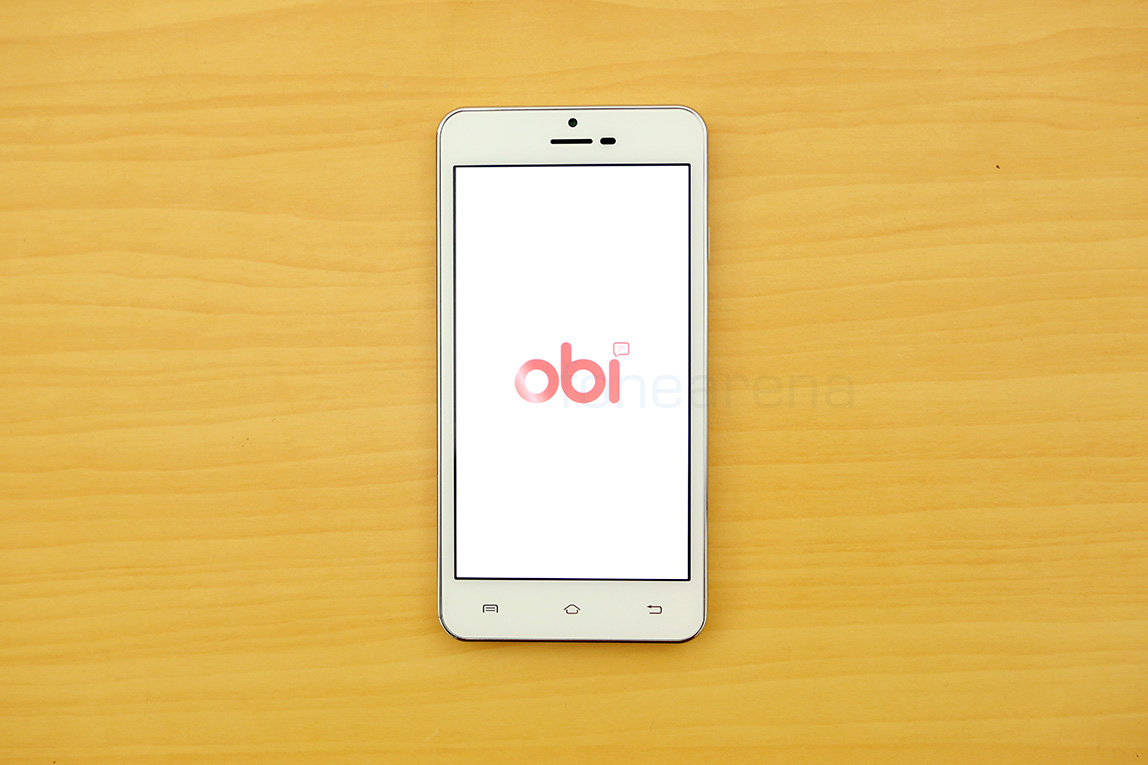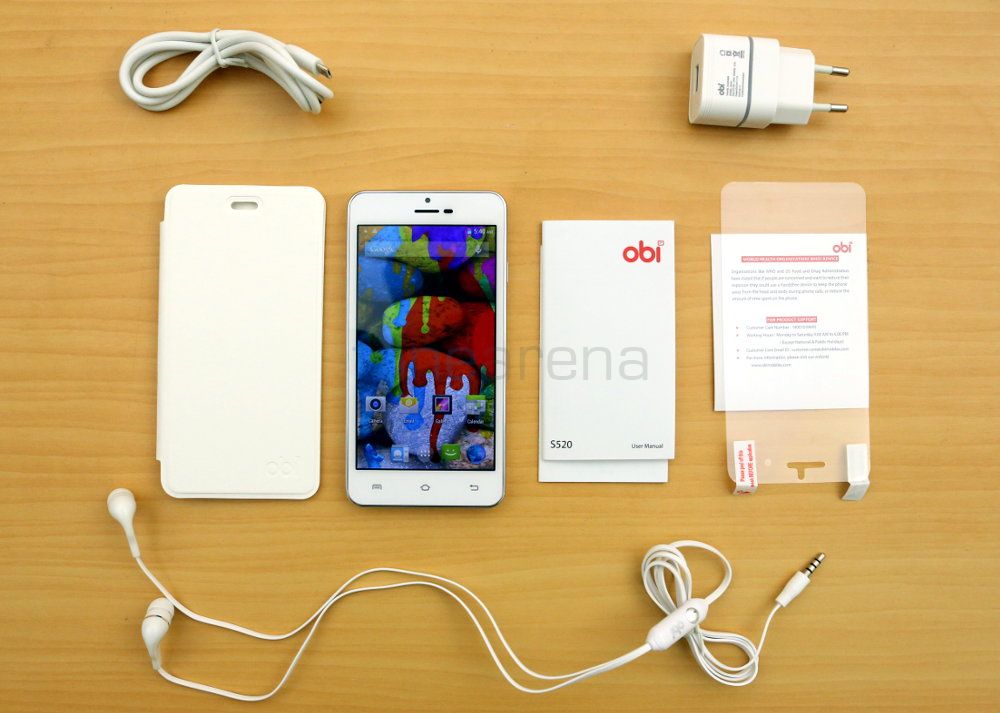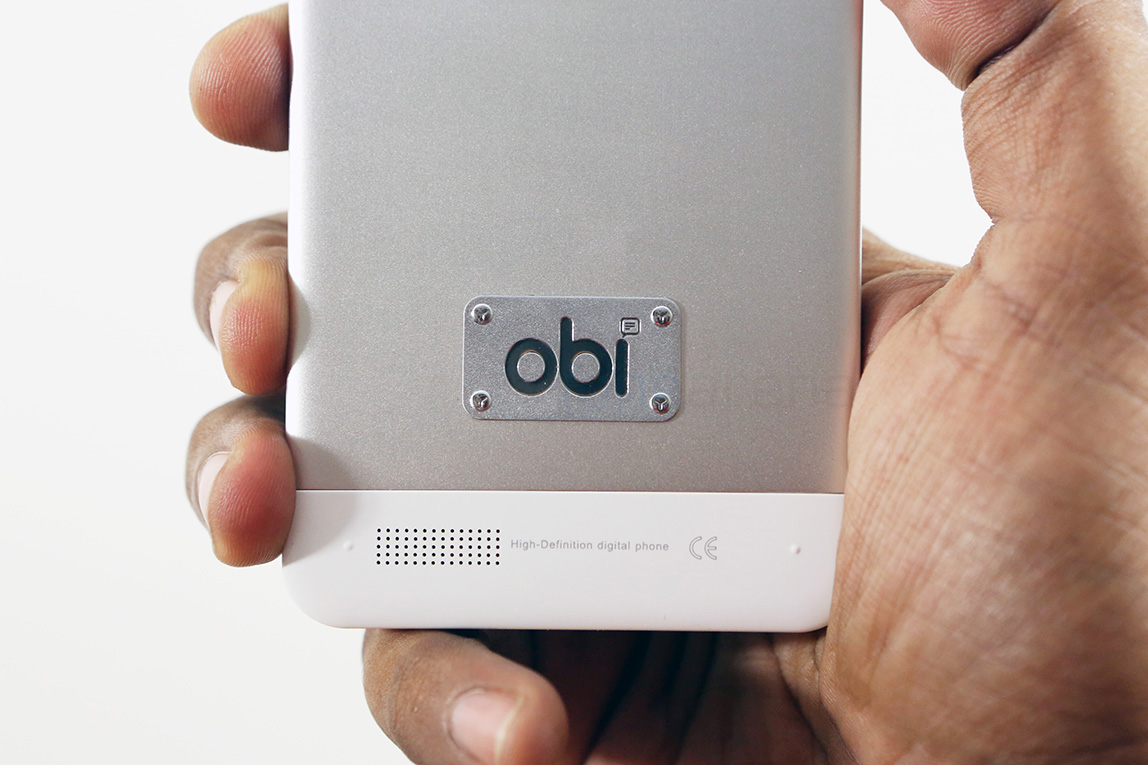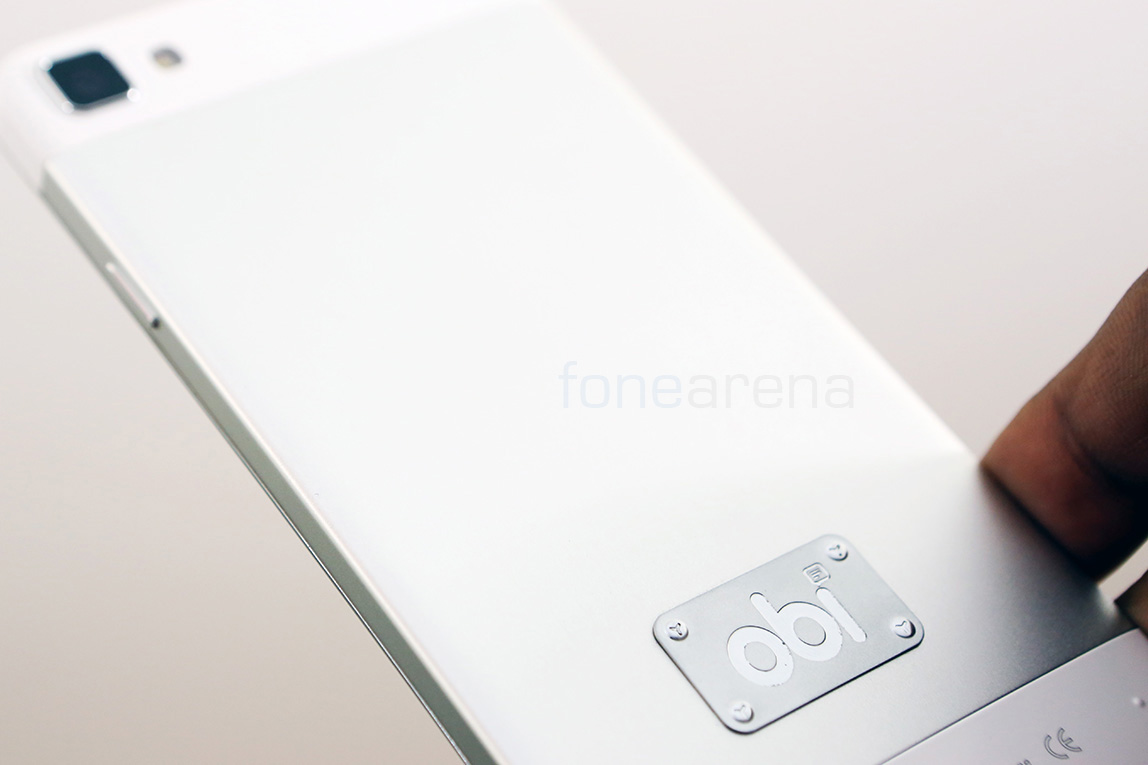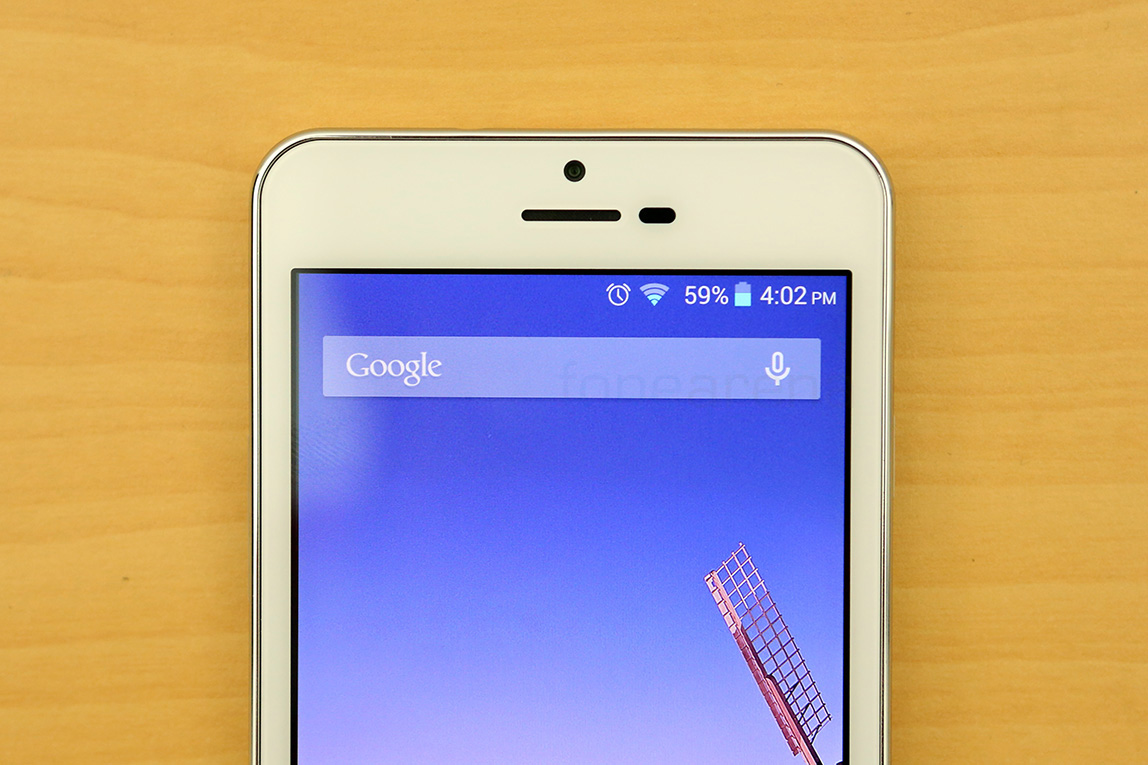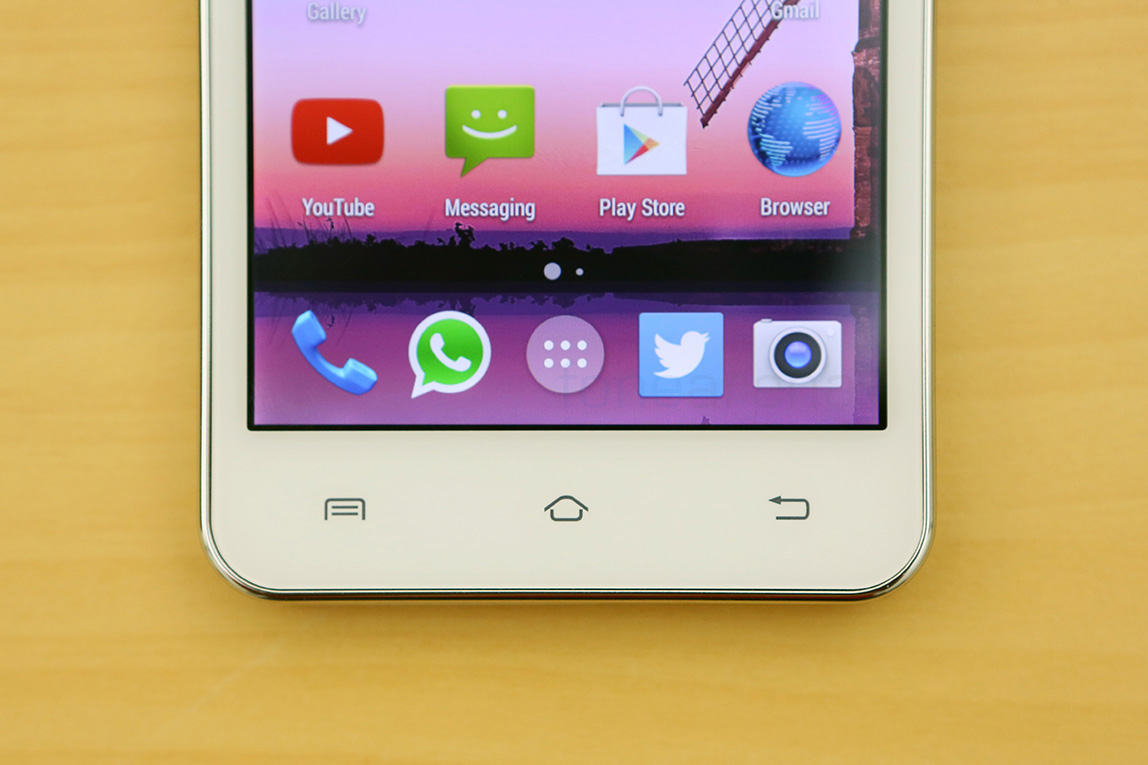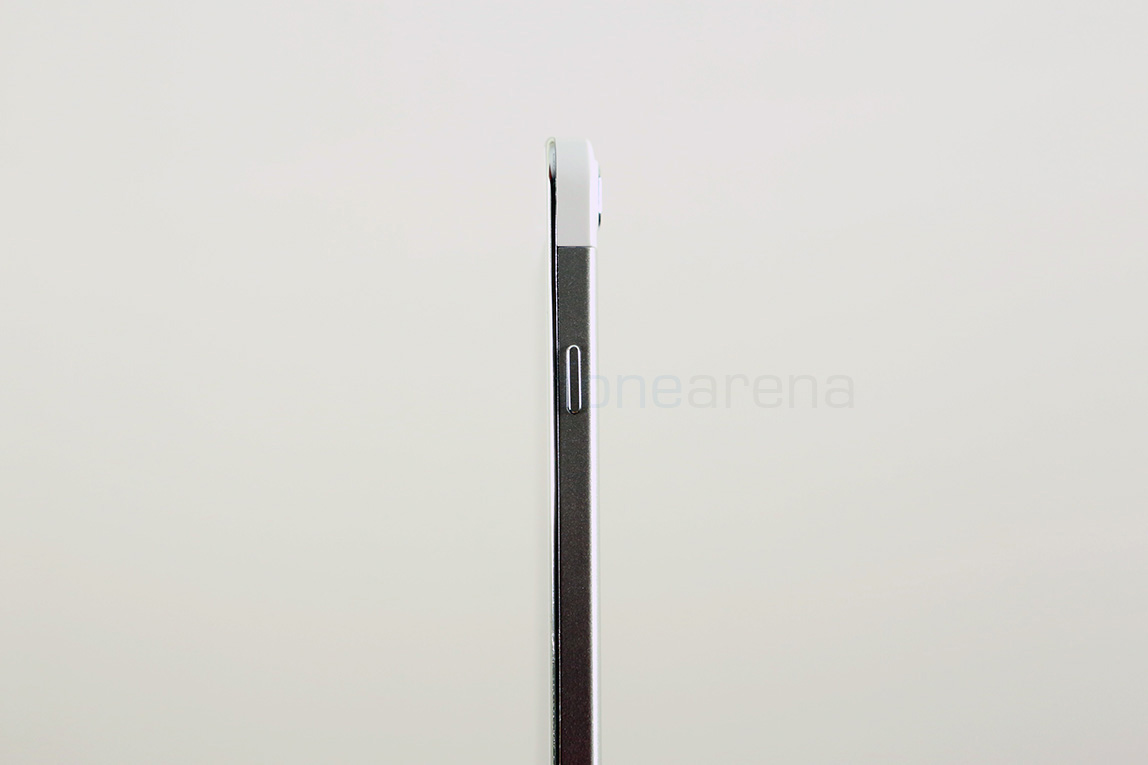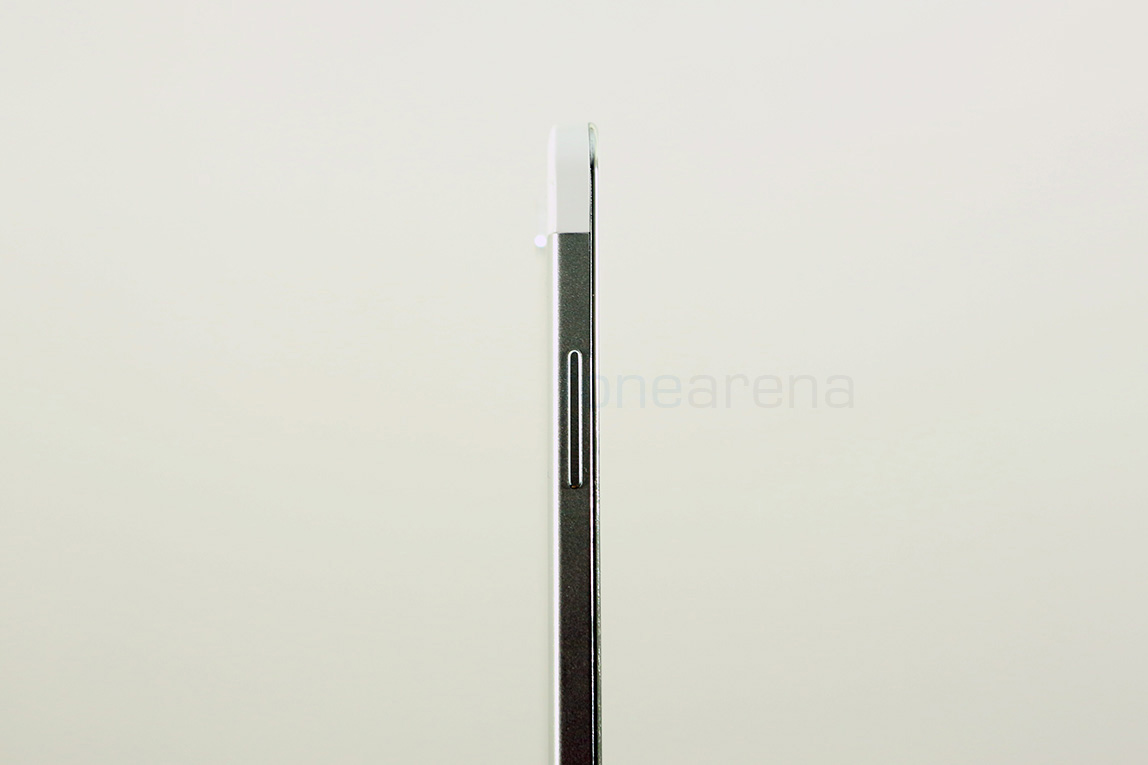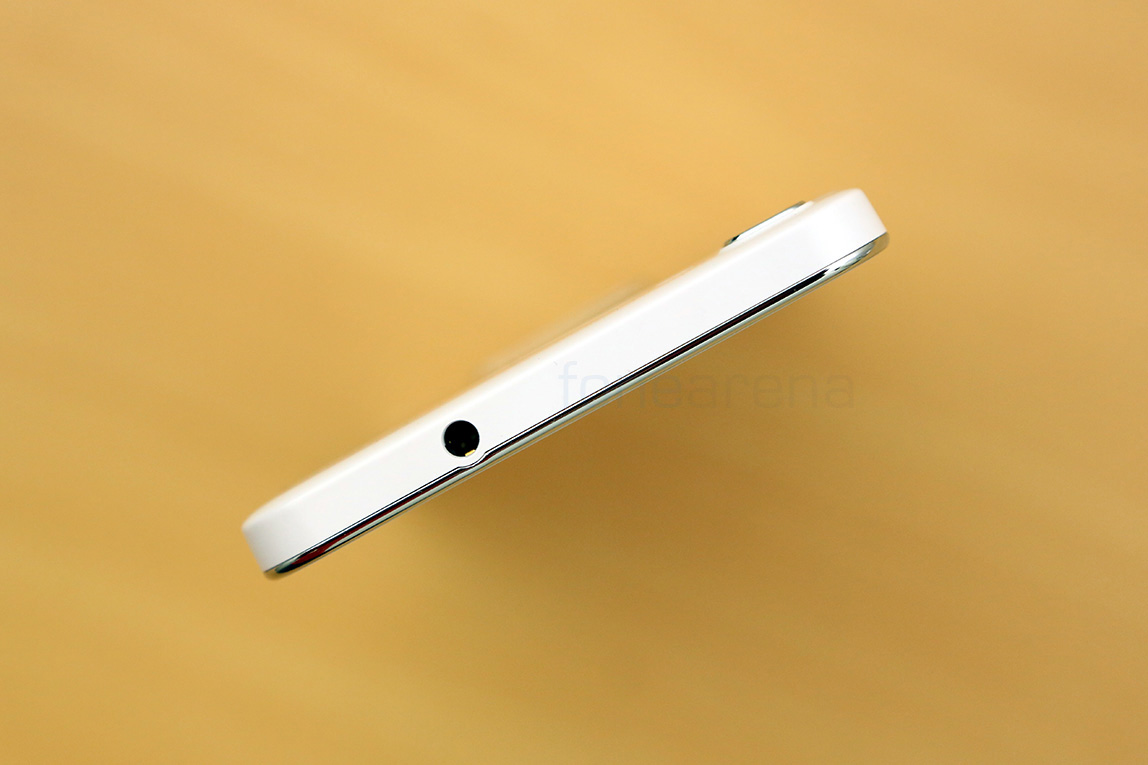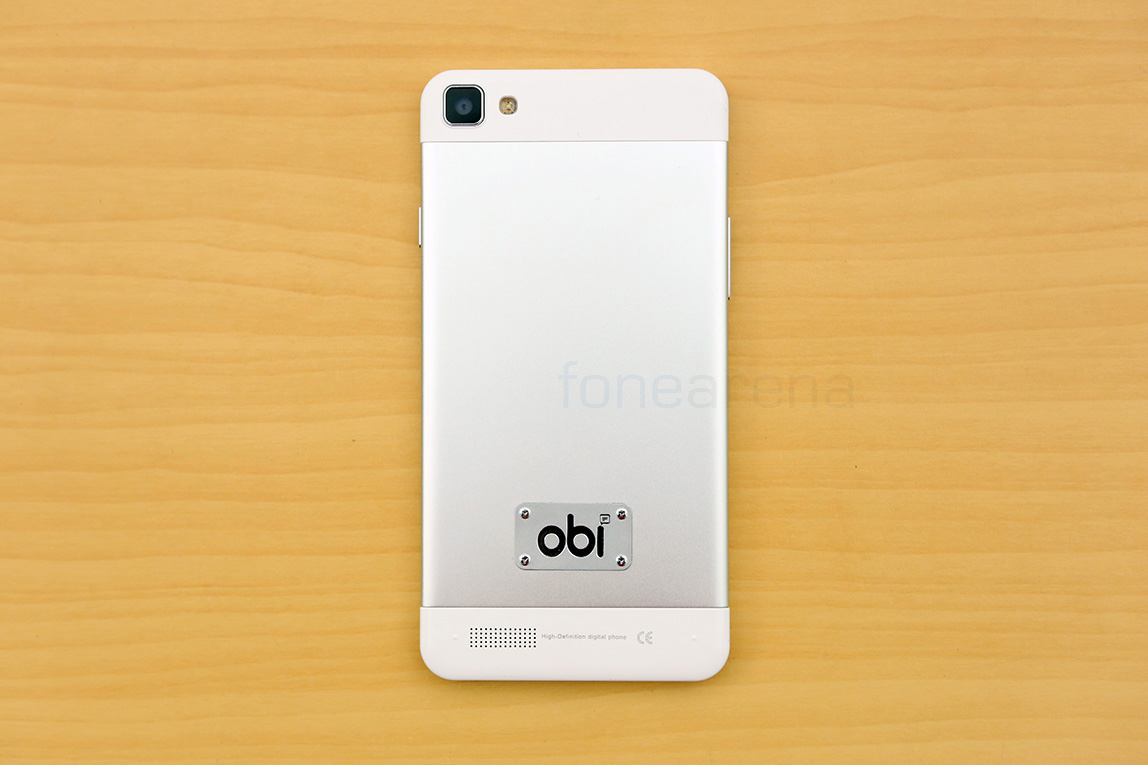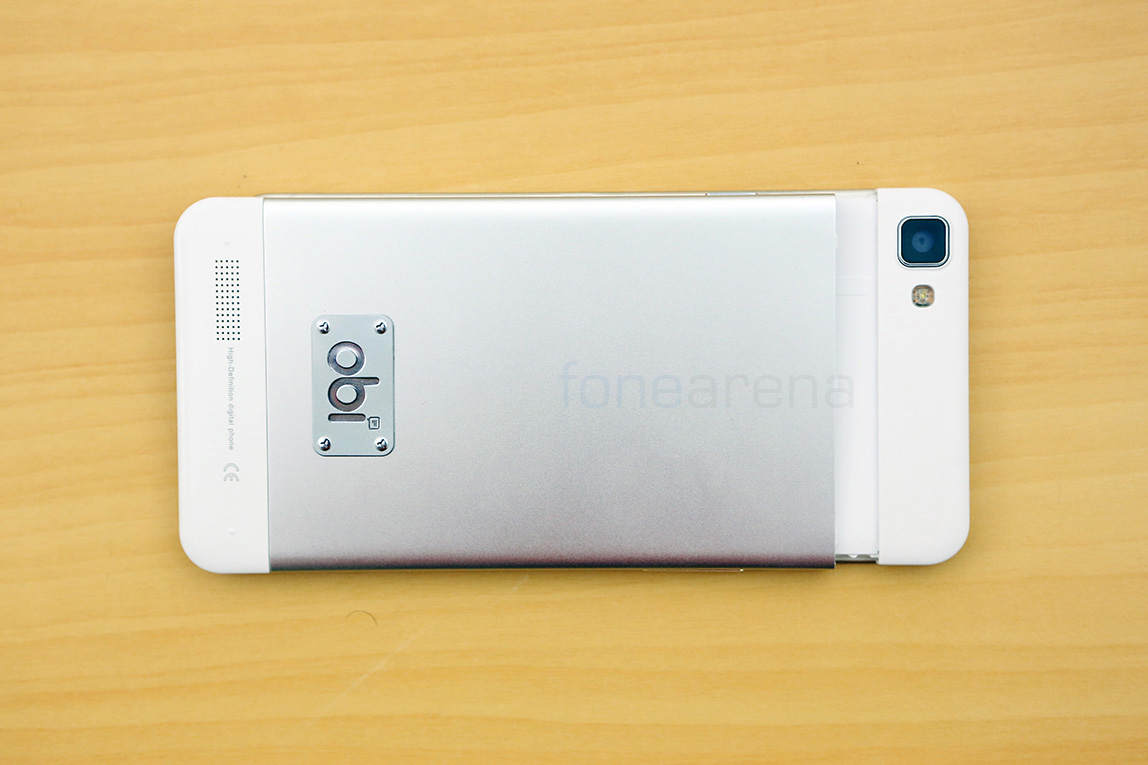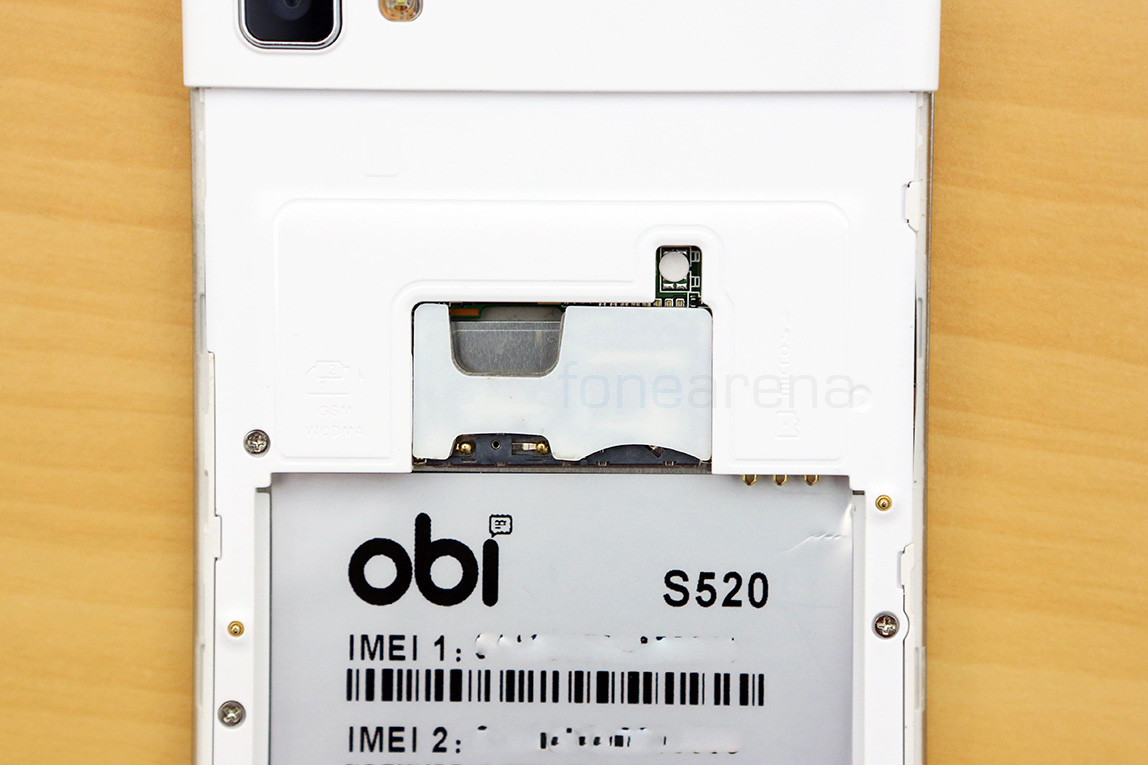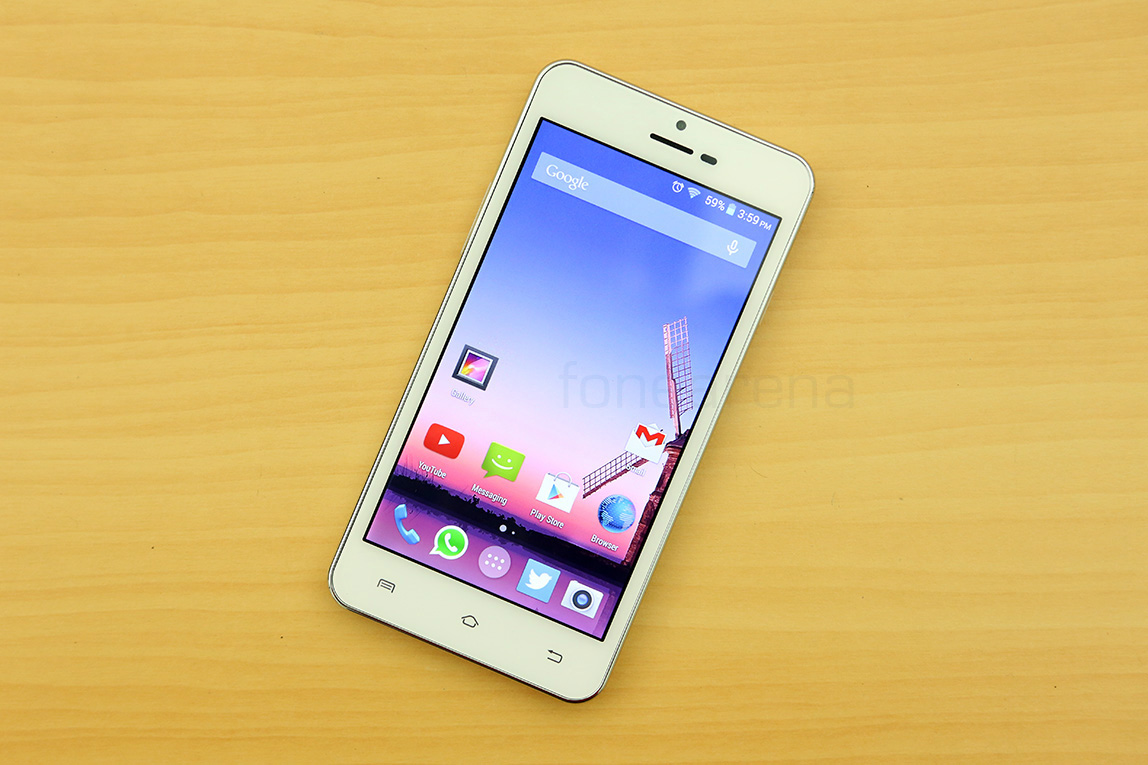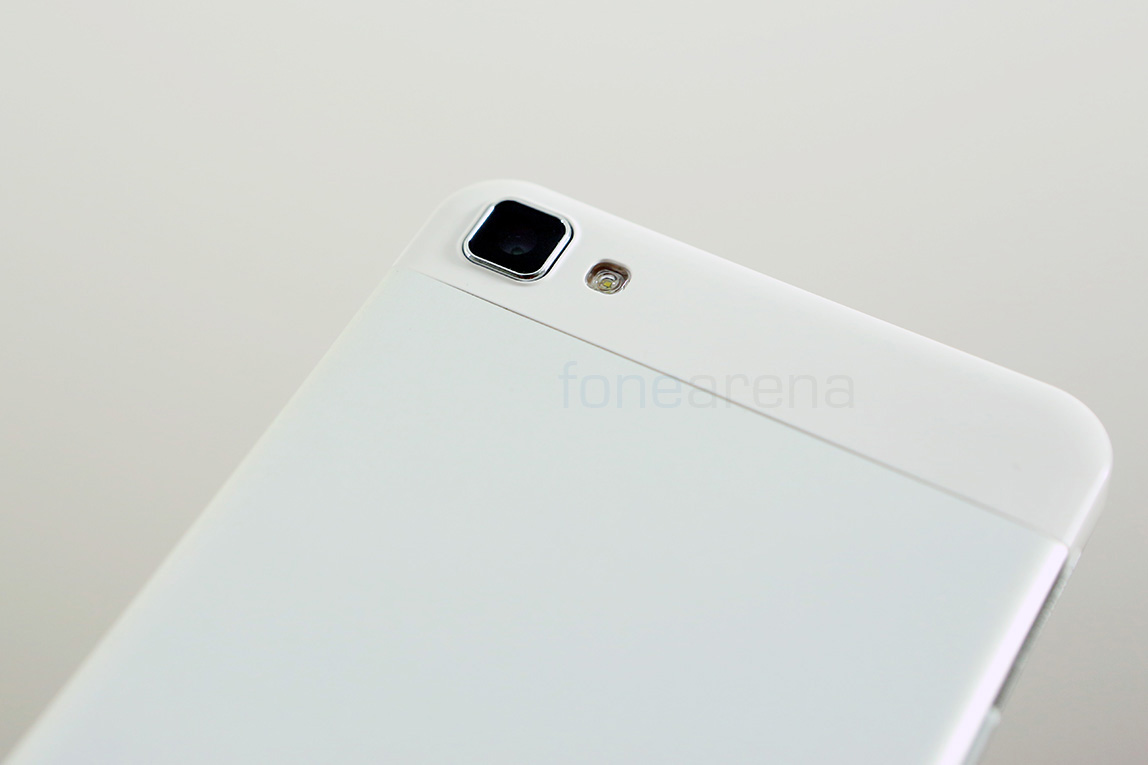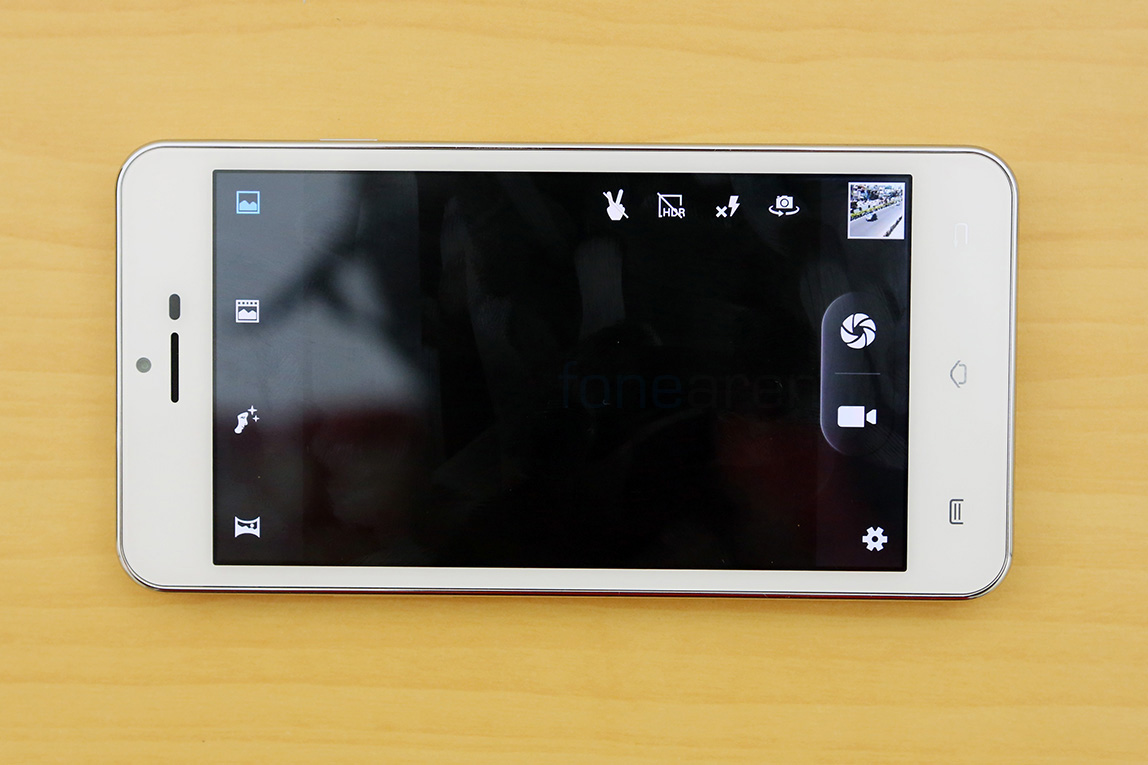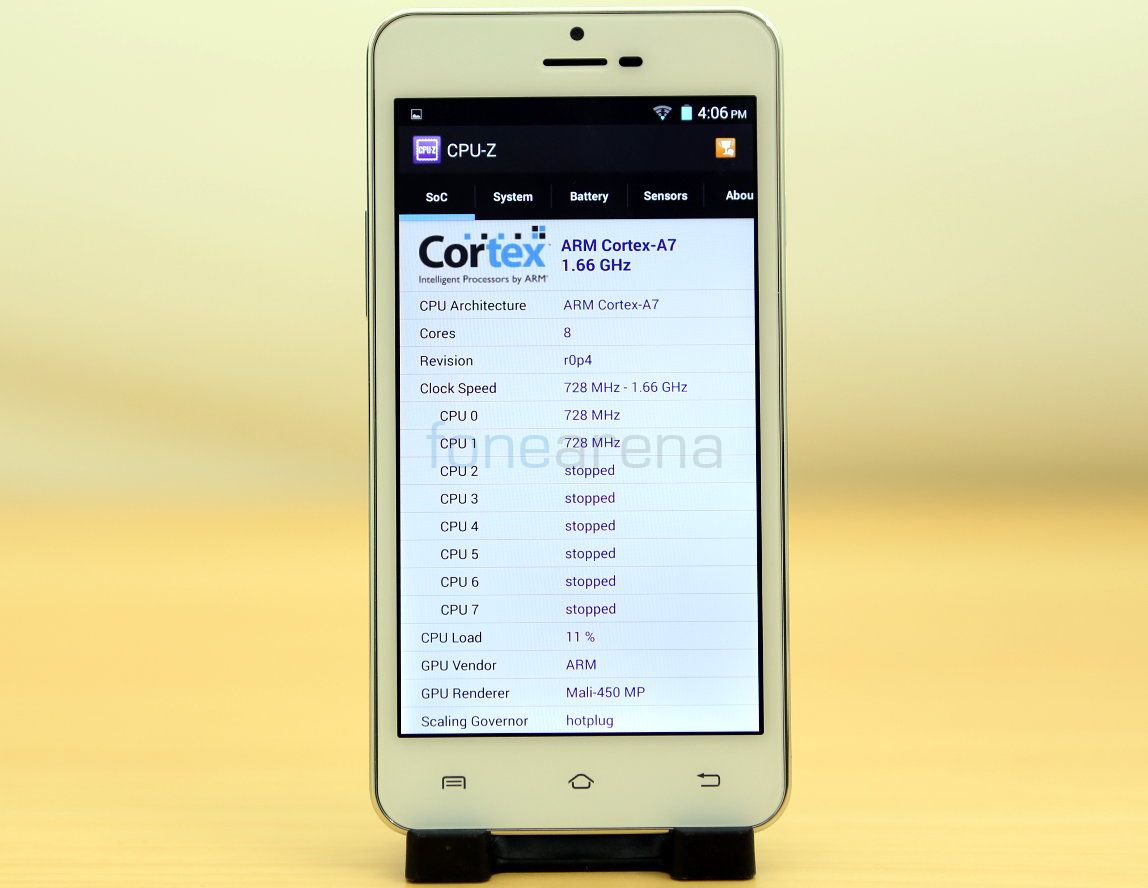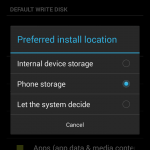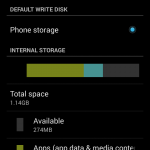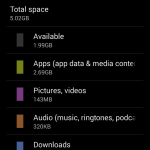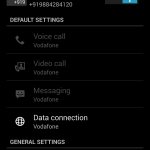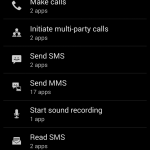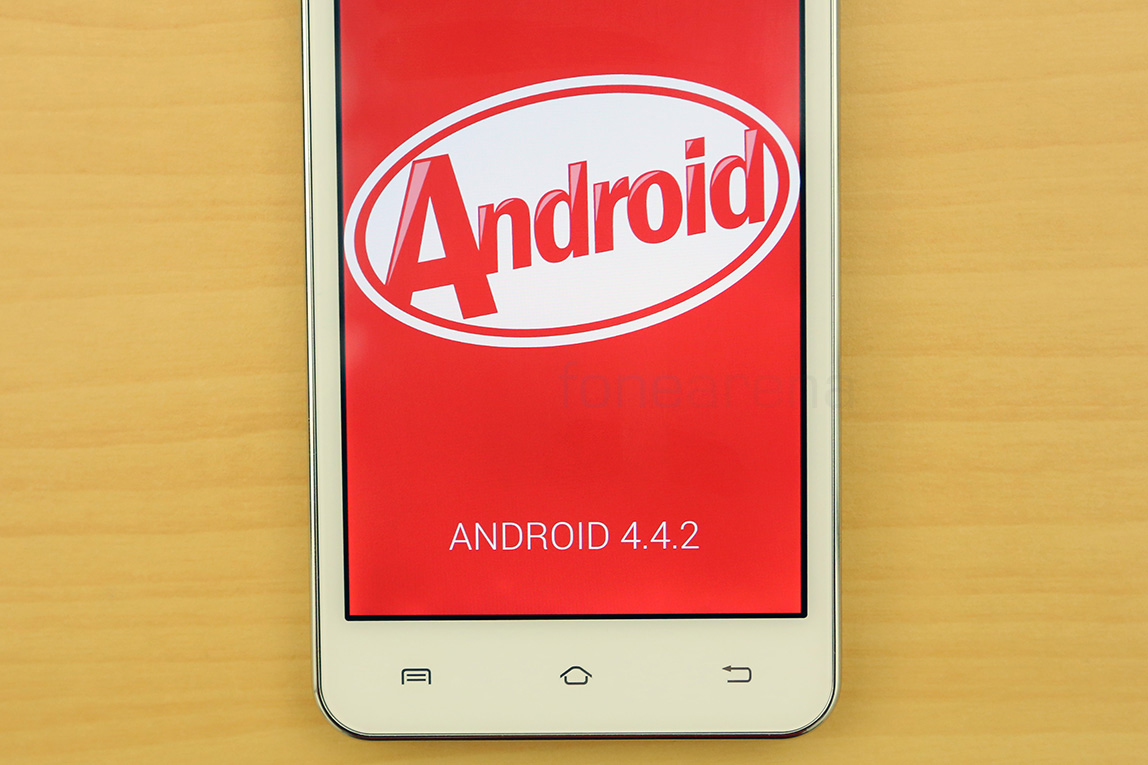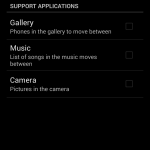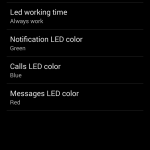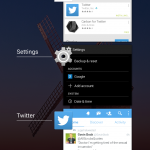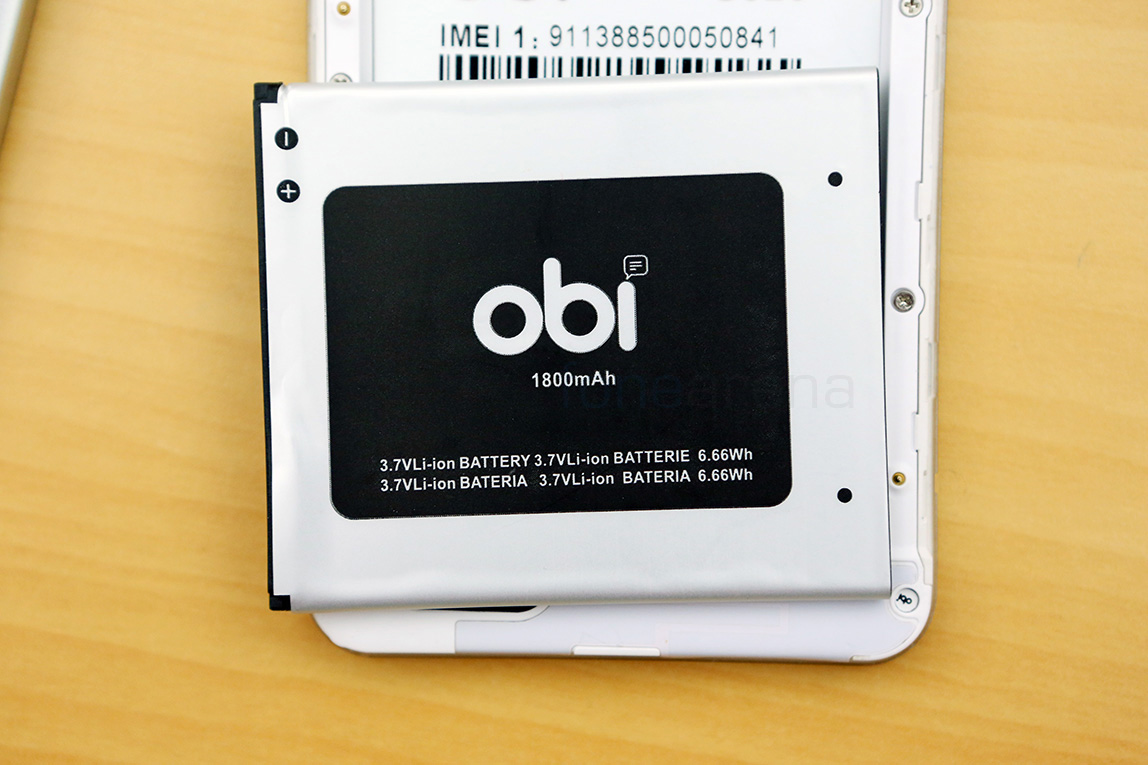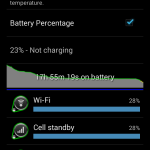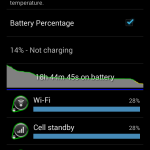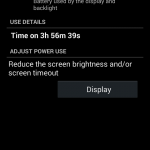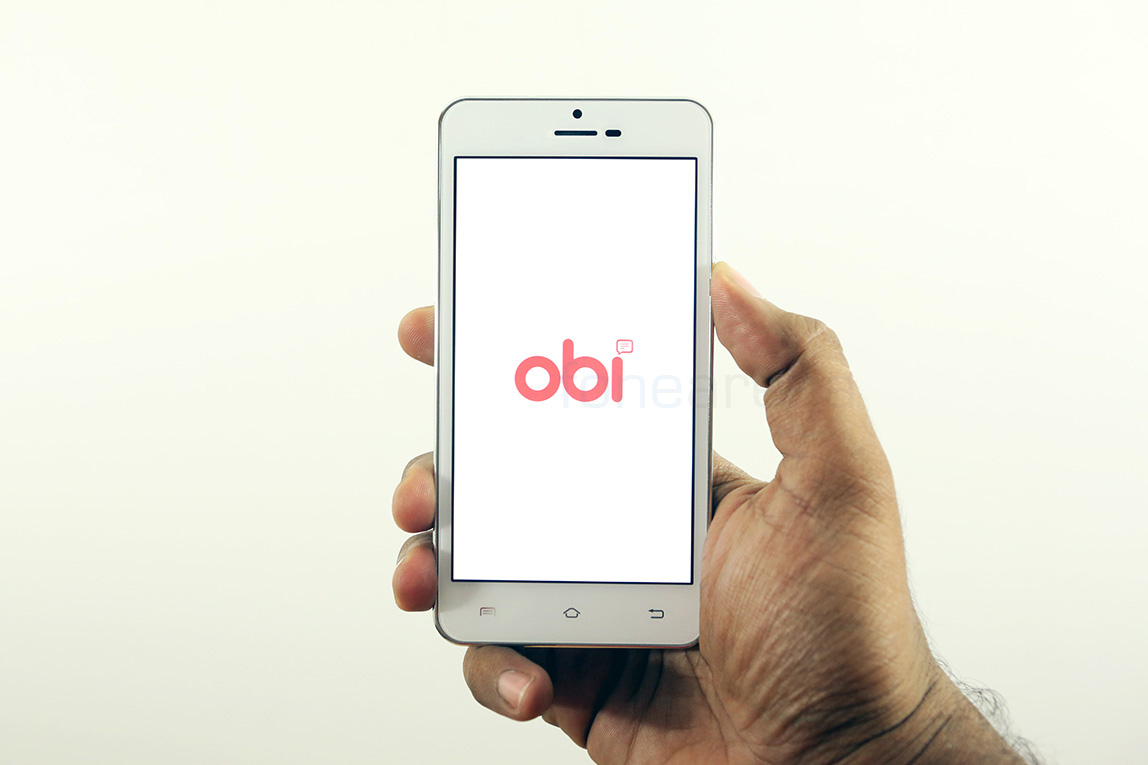Obi Mobiles is a relatively new and unknown brand in India. Riding on a media wave created by one of its investors, ex-Apple CEO John Sculley, the newly founded company launched its first ambitious product for the Indian market, a mid range device called the Obi Octopus S520. Sporting a 5 inch HD display, an 8 MP camera and the MediaTek Octa core processor (hence the name), the device is priced at Rs. 11,990, which is less for what it offers. By undercutting the competition, Obi aims to stand out, but will that be enough for people to notice a new brand? Lets find out in our full review.
Unboxing
We had unboxed the Obi Octopus S520 a while back, and these were the box contents that came with it –
You can check the video and our first impressions out, in this post.
Design, build and ergonomics
The Obi Octopus S520 comes in white, but has a nice two tone finish, with plastic and metal in the mix. This creates a premium look and feel for the device which is obviously designed closely on the lines of most smartphones in the market. Obi has also taken inspiration from the iPhone, as is evident with the design and the placement of the ear piece, the front facing camera and the sensors. There is nothing too special about the design, but it does looks nice overall, except for the company’s logo at the back.
Build quality, however, took us by surprise, as the phone is solid in every aspect. The plastics are of high quality, and the metals, even more so. The front face of the phone is protected by a chrome ring that adds a bit of gloss, and the same treatment, in terms of colour and gloss, is applied to the phone’s capacitive buttons. In good light, this makes the device look really premium. The metal on the sides and the back is, again, high quality, with the buttons receiving the same treatment. It seems the company has exerted a good amount of effort to get the quality right, which is a good thing.
At 8.4mm, the phone is not too thin, but not too thick either, as the design mandates flat sides. The device also feels very light, owing to the use of plastic and aluminium, both of which are light materials. This makes the handling easier, but we did find the metal sides to be slippery, as it had smooth edges that don’t bode well for hand grip. It’s not a deal breaker, but people with butter fingers will need to buy a case. By now, you might have already been used to a 5-inch phone, in that case, the Obi will feel very similar in case you have been wondering.
Hardware Walkthrough
Starting with the front, the full face of the phone is covered in glass, which surprisingly doesn’t catch much fingerprints. Underneath it, is the 5 inch 720p display, above which we have the front facing camera, the usual couple of sensors and the notification LED.
Below the display, we have the capacitive Android shortcut keys for options, home and back. These are not backlit, so they are useless in dark places, but they do have vibration feedback.
The right side houses the power/lock switch alone, while the left side houses the volume rocker. This is pretty much a standard setup these days.
Moving to the top, we have the 3.5mm audio jack.
Over at the bottom, we have the primary microphone and the micro USB port.
The back has the 8 megapixel camera with a single LED flash, the Obi logo on a steel plate and the loudspeakers below.
At first glance, it’s not obvious how the back panel is to be removed, but sliding the whole thing down, with a grip on the logo, does the trick. Not too straight forward, but this works, while making the phone look unibody.
Upon opening, we can see the two SIM card slots, one micro SIM and the other normal, alongside the micro SD card slot and the battery below. Now lets focus on the hardware highlights.
Display
The display on the Obi Octopus S520 is a 5 inch IPS LCD with a resolution of 1280×720. While we have seen many devices with the same screen size and the resolution, a trend that Micromax started with its Canvas HD, the S520 does look visibly better. It has great viewing angles, for a start, and the colours are not too bad either. Watching videos or reading web pages felt normal, except for one tiny complaint that we could see white spots on the bottom of the display. Honestly, we could barely notice it, but this is a quality control measure that might have slipped for our unit alone. That aside, the display is really good indoors, as well as outdoors, as it has decent brightness to compensate for the bright sunlight. At this price point, this is easily one of the best smartphone displays you’ll find.
Camera
The Octopus S520 comes with a 8 megapixel sensor for its camera at the back. The IMX111 Sony-made sensor was one of the older 8 MP implementations that the Japanese company had used for its yesteryear flagships, so the choice of using it on the S520 by Obi seems like a good one. The camera takes above average pictures for the price it comes at, and it’s not just about the megapixel count. The daylight pictures we took had good colour balance, good white balance and overall, detailed enough.
The camera interface is pretty much the same as all the other unmodified MediaTek powered phone, with modes on the left and controls on the right. The HDR mode takes pictures with better dynamic range and lesser post processing, which we found to be decent, but the interface was indeed slow and cumbersome when it came to operation. But the focus was fast, even in low light conditions, so focusing a photo is faster indeed, but beware of the slow actuation of the shutter. Coming back to the camera performance, here are some samples to help you make a better judgement of the camera –
The phone also records 1080p videos, with electronic image stabilization. The output turned out to be pretty decent in terms of video, but poor in terms of audio, as it has just one microphone to record. Here’s the video sample –
httpv://www.youtube.com/watch?v=XnFf7sswP84
Internals and Performance
The Obi Octopus S520 derives its name from the chipset it runs on, which is MediaTek’s MT6592 Octa Core product. Touted as “True Octa Core” the chip has 8 A7 cores running at 1.66 GHz. The gaming duties are handled by the powerful Mali 450 and the phone comes with 1 GB of RAM to handle multiple apps simultaneously. The general performance, is class leading at this price, and that should not be surprising, as the Octopus S520 is the only device at this price, with an Octa Core processor.
We ran several synthetic benchmarks to find out what the raw performance is like, and the S520 didn’t disappoint. Here are two examples –
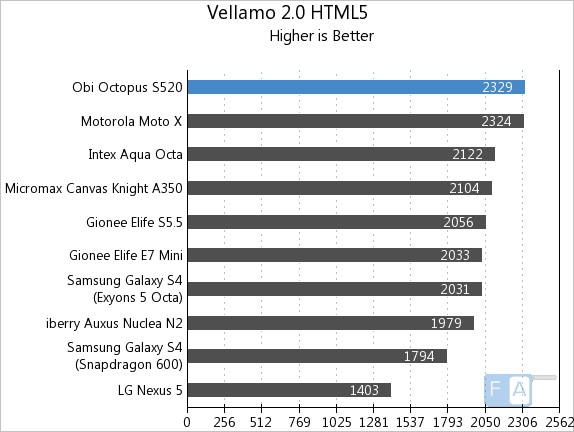
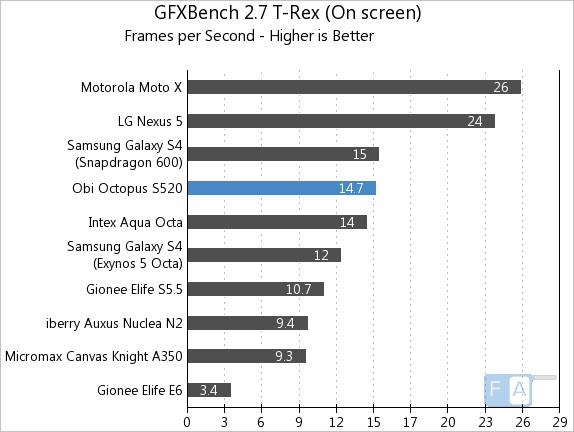
You can check out the complete set of benchmarks here, and as you can see from the examples above, the performance falls in line with expectations from the chip that we have seen in other devices before. Seeing that it is almost as good as the S4, is something really surprising, especially at this price point. It score higher than the Moto G too, which is its closest competition.
We also tested a number of games and found it to perform adequately well, again in line with what the other Octa Core phones were like, but of course, some games had poorly optimized support, and hence poor graphics. Here’s a gaming review, in case you are wondering –
httpv://www.youtube.com/watch?v=BqI9pg83Gd8
On the RAM side, we were happy to note that the UI is very light and doesn’t hog the RAM like other Uis do, hence lessening the stress of running multiple apps in the background. We never faced problems with speed, and the whole experience was lag free. On the storage side, the device comes with 8 GB of internal memory, with around 5 GB available for apps and media. The phone can also let you install apps on the SD card(max 32 GB), so if you choose the expand it, you’ll never run out of space.
Connectivity
The S520 is a dual SIM phone, with one micro SIM slot and another normal sized SIM slot. The micro SIM slot is stacked on top of the other, and both the slots support 3G data connectivity, but one at a time. The setup is very similar to all the other Mediatek based dual SIM devices in the market, and you have the SIM management options, which are granular enough to let you change your preferences for calls, messages, data and so on. Interestingly, even the KitKat dialer, without support for local search, has been modified to let you use the quick-switch dual SIM functionality. Other connectivity features include the usual WiFi, BT 4.0, WiFi Direct, Miracast and so on.
Software
Coming to software, the Obi Octopus S520 runs on Android 4.4.2 KitKat, with very less modifications in the UI department. The launcher is almost exactly the same as the Google Now launcher that the company has recently released for all devices running Android 4.1 and above. Bigger icons, condensed Roboto, White schemes and newly designed tooltips all feature in this UI too, which is pretty much the AOSP build of KitKat.
However, there are subtle changes and feature additions to the UI, which marginally improve the user experience of the device. The lock screen, unlike stock, has four shortcuts, just like the early Jellybean ones. The quick settings have extra toggles for alarm, miracast, data connection, audio profiles and more. The feature additions include LED flash alert for SMS and call notifications, which is basically using the back facing LED flash unit for notifying you. It flashes once for messages and flashes continuously for calls. A bit embarrassing in the public, especially when it comes to calls, but mighty useful if you are used to keeping the phone face down.
Just like the Lava Iris 504Q, the Obi also comes with support for air gestures, which are very similar to what Samsung had shown off with its Galaxy S4. You can use hand wave gestures that are recognized by the powerful proximity sensor to move screens from top to bottom, left to right or vice versa. They are gimmicky at best, but worth a mention if you get your hands dirty for your jobs.
When it comes to apps, the default apps are all AOSP, and it seems like Obi has not sought to include many Google apps too. Sure Google Now, Play Store and Gmail are there, but even apps like YouTube we had to download and install, which is weird. The only pre-installed third party app is Truecaller, which thankfully works only after you set it up. Other than this, there is not much to talk about Software, except for the fact that Obi has dabbled with modifying the scrolling physics, which they could have avoided. On the media side, the music player and the video player play a lot of formats by default, including support for 1080p videos when it comes to video. The device also has support for the FM radio, however, we found that the loudspeaker, despite the “High definition digital” tagline, distorts easily and is poor, even for notification sounds, let alone music.
Battery Life
Coming to battery life, the Obi Octopus S520 is powered by a 1800 mAH Lithium Ion removable unit. At first glance, this got us worried because even a couple of years back, 2000 mAH was a constant and it provided average battery life. However, thankfully, the one on the Obi is not too bad. It gave us around 18 hours of battery life, with medium to heavy usage including regular Whatsapp, Twitter and the camera use. We were left with around 18% battery in the end, which could have gone longer if we had turned the CPU power saving on. So, in the end, we got reliable battery life, although we wished to see a bigger battery in the device. It’s definintely not the best, but for the price it comes at, good enough.
Conclusion
We have said this a lot of times, and we will say it again, when it comes to pricing, Obi has got it right. The build quality, the display, the performance, the camera, the battery life and the even the clean UI, everything seems to fall in the right place, but there’s no USP and that’s our biggest concern. The Obi Octopus S520 is a great device, which happily undercuts the competition, but is not able to stand out, due to the lack of special features, which is much needed for a new brand to make a point. If Obi can lure existing brand loyalists with the pricing and positioning, it will be able to grow from there, but with new tough entrants like Xiaomi, renewed vigor from companies like ASUS and Motorola, it’s definitely going to be tough for Obi. We’ll refrain from discussing the pros and cons of this device, because the cons are mostly unpredictable market forces like new competitors, distribution etc, but you can of course let us know what you think, in the comments section below.

